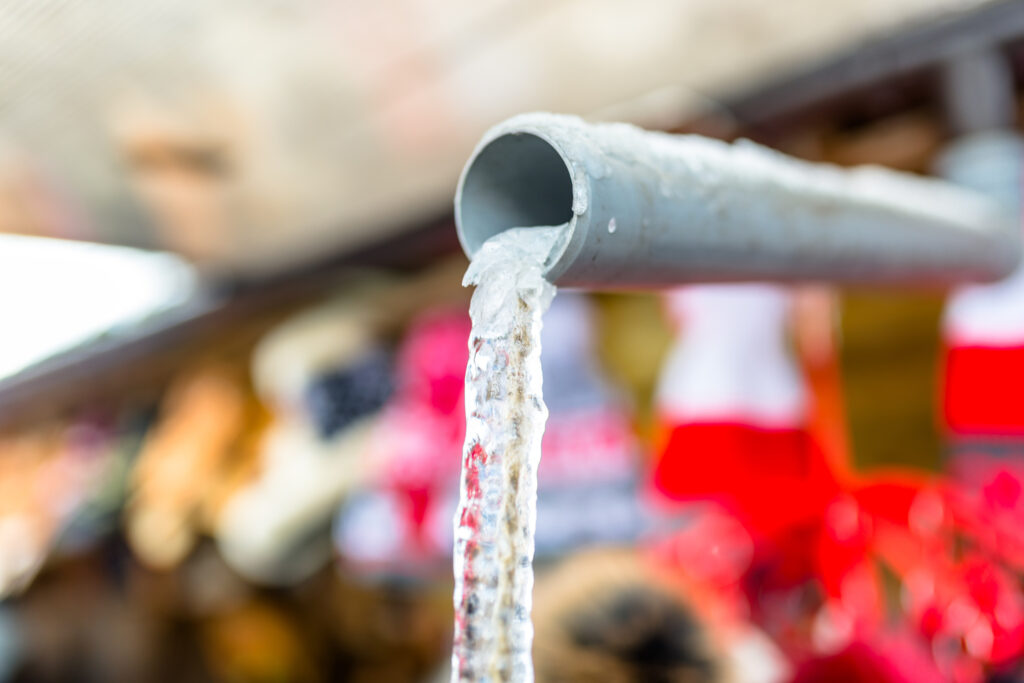Give us a call today: 416 663 4777 for a free upfront estimate! 24/7 Emergency Service
Why Do Your Pipes Freeze in Toronto?

As you’re well aware, the winters in Toronto can get brutally cold. Sometimes the water in your pipes will dip below freezing and when it does, it will not only clog your pipes with ice, it begins to expand. Expanding ice in pipes puts your pipes at a major risk of leaking or even bursting.
By the time your pipes thaw, you could potentially have a serious leak and flooding situation on your hands complete with water damage and the need for some emergency repairs before things get worse.
Frozen Water Pipe Prevention
- Make sure you drain all outside pipes and faucets. Remove any hoses and turn off the shut-off valve inside and let the water bleed out of the faucet until it’s drained.
- Look around your home for any vulnerable pipes in uninsulated areas like basements, attics, and crawlspaces. Any pipe that is exposed should be insulated as soon as possible. If your garage has a water supply, keep it as free from exposure to the cold as possible.
- You should make sure any exposed pipe is insulated against the cold. This can be as simple as wrapping a towel around the pipes yourself, but the most efficient and safe option is to call a plumber who can use professional materials specifically designed for this task to get it done.
- If you find it getting especially cold, consider opening cupboards and cabinets in your kitchen and bathroom to expose the pipes to the warmer air of your home.
- If you plan to leave town in the winter, don’t shut off your furnace completely. This way you won’t come home to frozen pipes.
- In an absolute deep freeze when nothing else seems to be working, try running your pipes at a very slow trickle. Running water is less likely to freeze and may prevent damage until the temperature warms up slightly.
What If Your Pipes Still Freeze?
If preventative measures fail and your pipes have frozen over, you want to immediately shut off the main water valve and call a professional plumber.
Signs of Frozen Pipes:
- No water coming out of the faucet
- Frost on exposed pipes
- Strange smell from blocked pipes
- Unusual sounds
- Damp drywall
Frozen Pipe Repair
- The first step in repairing a frozen pipe is identifying where the problem is in the line.
- Once the problem is identified we can then isolate that section to begin work.
- If necessary we can devise a temporary solution to get you back to enjoying day to day activities while we work on thawing the pipes.
- Thawing pipes can take some time as too much heat too fast could cause more damage. This process must be handled carefully.
- Finally, once the pipes are thawed, we’ll be able to inspect for any damage or leaks and make repairs as needed.
What Can You Expect When You Choose Us to Fix Frozen Pipes:
Our team of qualified and licensed plumbers will get your leaks detected and repaired quickly and professionally. You can expect every aspect of our work to be done right including;
- We have trucks outfitted with advanced, pipe-thawing technology to unfreeze your pipes quickly and safely
- Emergency response ability to get to your home immediately
- Over 20 years of experience to help you plan your work effectively
- Honest and fair pricing up front
- A team of fully bonded and insured professionals
- Trade license verified and fully up to date certification
- A clean house after our work is finished
We treat your home the way we expect workers to treat our homes. That means coordinating with you from the moment you call for a quote all the way through the final work we perform. Our team will cover and clean everything in their work area so you don’t have the added stress of a mess to tidy up, and we’ll finish as quickly and efficiently as possible.
Our work speaks for itself. Check out the testimonials from past customers we’ve worked with and then call us for a no-obligation quote.
Give us a call today: 416 663 4777 for a free upfront estimate! 24/7 Emergency Service




